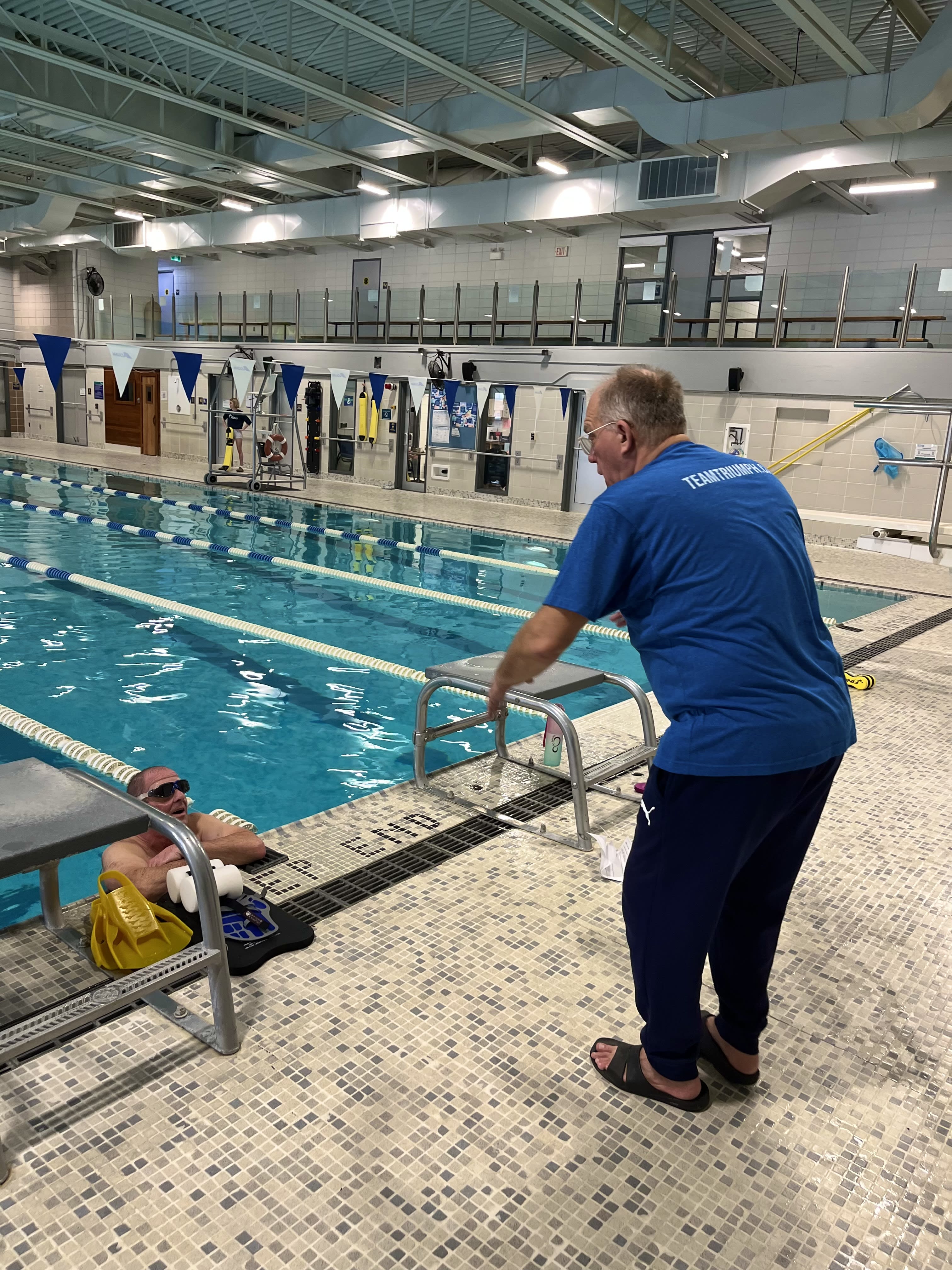
Age is just a number, especially for triathletes over 50 who continue to push their limits and redefine what's possible. While the fundamentals of triathlon training remain consistent across age groups, athletes in their 50s and beyond may need to adjust their approach to training to accommodate changes in physiology, recovery capacity, and lifestyle. By understanding the unique considerations and optimizing training strategies, over 50 triathletes can continue to thrive in the sport and enjoy fulfilling athletic endeavors.
Training Considerations for Over 50 Triathletes:
Prioritize Recovery: As we age, recovery becomes increasingly important for maintaining training consistency and minimizing the risk of injury. Incorporate ample rest days, active recovery sessions, and quality sleep into your training regimen to support optimal recovery and adaptation.
Focus on Strength and Mobility: Aging can lead to loss of muscle mass, decreased flexibility, and joint stiffness. Include strength training exercises targeting major muscle groups, as well as mobility drills and flexibility exercises to improve range of motion and reduce the risk of injuries.
Adjust Training Intensity: While intensity is still crucial for performance gains, over 50 triathletes may need to be more mindful of training intensity to prevent overtraining and minimize injury risk. Listen to your body, monitor fatigue levels, and incorporate periodization into your training plan to balance hard efforts with adequate recovery.
Embrace Cross-Training: Cross-training activities like strength training, yoga, and Pilates offer numerous benefits for over 50 triathletes. They provide variety, reduce the risk of overuse injuries, and improve overall fitness and functional movement patterns.
Focus on Quality Over Quantity: Instead of chasing high training volumes, prioritize the quality of your workouts. Incorporate interval training, tempo efforts, and race-specific simulations to maximize training effectiveness while minimizing training time and reducing the risk of burnout.
Pay Attention to Nutrition and Hydration: Proper nutrition and hydration are essential for supporting training adaptations, promoting recovery, and maintaining overall health. Focus on nutrient-dense foods, adequate protein intake, and hydration strategies tailored to your individual needs.
Listen to Your Body: Over 50 triathletes may experience changes in energy levels, recovery capacity, and susceptibility to injuries. Be attentive to signals from your body, and be willing to adjust your training plan as needed to prioritize health, well-being, and longevity in the sport.
Set Realistic Goals: While age is no barrier to athletic achievement, it's essential to set realistic and achievable goals based on your current fitness level, lifestyle, and commitments. Celebrate progress, embrace the journey, and focus on personal growth and fulfillment in your triathlon pursuits.
Triathlon is a sport for all ages, and over 50 triathletes bring wisdom, experience, and resilience to the multisport community. By acknowledging the unique considerations of training after 50 and adapting their approach accordingly, athletes can continue to pursue their passion for triathlon with vigour and vitality. Whether you're aiming for podium finishes, personal bests, or simply enjoying the camaraderie of the triathlon community, remember that age is just a number, and the journey is yours to embrace and enjoy to the fullest.
Julia Aimers
CSEP Clinical Exercise Physiologist
CSEP High-Performance Specialist
Certified Triathlon, Cycling, Yoga and Swimming Coach
USA Cycling Level 2 Coach
Training Peaks Accredited Coach

I would highly recommended Eric and Team Triumph!
Ian Ross

A year ago I could only tread water and had not run since childhood. With the amazing Virtual Olympic course, support, guidance, and tips from of all the folks at Team Triumph I've ended the season with my first Olympic distance triathlon under my belt and am hooked! Really looking forward to the 2025 season and even to the hard work over the winter to prepare. Karen Houle

I wanted to let you know that the Perth triathlon was a great experience, I somehow placed third in my age group! What a supportive group of participants (including Team Triumph athletes), cheering bystanders and volunteers.
Thanks to your swim lessons, I learned the technical basics and gained confidence to get back in the pool after decades. And it was really special doing this with Ann Laidlaw, my bestie for many years. We did a couple of additional swims with Kevin and Team Triumph people, also a great way to continue learning and practicing good technical form.
I will continue with lane swimming and who knows, maybe there's another triathlon in my future!